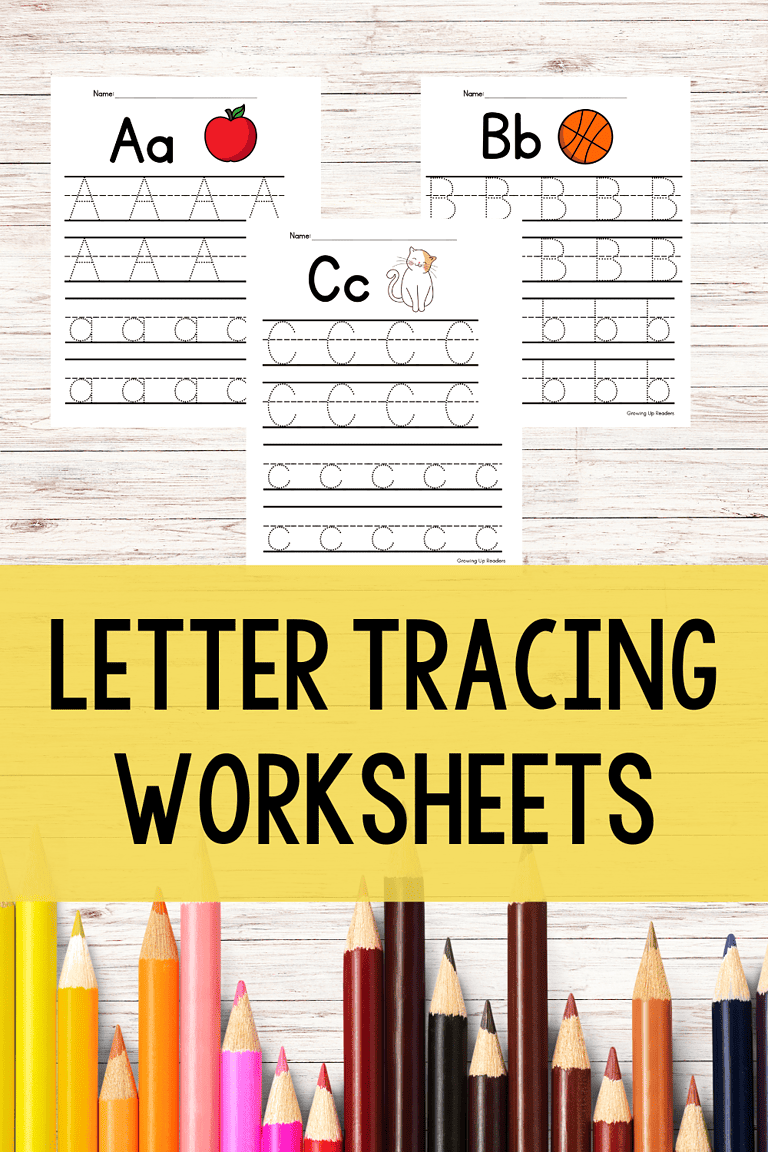HOW TO ASSESS LETTER recognition
This post is all about how to assess letter recognition.
Is your child able to name the letters of the alphabet? If you’re not completely sure, it might be a great time to assess their letter recognition skills.
Recognizing names and letters is essential in our child’s reading development. In this post, we will not only discuss why letter recognition is important, but we will outline steps on how to assess this letter knowledge! Are you ready?

what is letter recognition?
lETTER recognition EXPLAINED
Letter recognition is your ability to look at a letter and identify (or name) that letter.
For example, if you see a flashcard with A on it, letter recognition is being able to say “Hey, that’s the letter A!”
Note: It’s completely fine if your child doesn’t have this enthusiasm when responding!
Letter identification is an important skill when it comes to reading. When your child is able to recognize and identify different letters of the alphabet, their relationship with letters and sounds gets stronger.
Why is that important?
When we know the names of the letters of the alphabet, we have a common way to talk about them This is huge in reading instruction!
When we know the name of a letter, we store that information. Eventually, that information becomes important when we begin to read words.

WHEN SHOULD I ASSESS LETTER RECOGNITION?
FOCUS on READINESS OVER AGE
By the time your child is four or five years old, they will typically show some letter knowledge. They may show interest in letters prior to this age.
There is no harm in assessing your young child. It sure is helpful to know what exactly he or she knows!
But… (There’s always a but).
Keep it low-pressure! Letter recognition can be so enjoyable for everyone involved. Laying off the pressure keeps it that way!

SIGNS YOUR CHILD IS READY
If you are eager to teach letter recognition to your child, let’s talk about some signs that your child is ready.
I already talked about how it’s important to avoid putting early pressure on your child to learn the different letters. But it’s worth repeating!
Your child may be ready to learn letter names if they are expressing interest in different books. They may begin to ask questions about other letters in words.
Are they starting to show interest in the letters of their name? If you notice your child is starting to try to write letters, that’s great! Support them in this awesome world of letter exploration.
The best way to know if your child is ready is to keep an eye out for your child’s behavior. You will know when your child is ready to learn letter names from that.

HOW TO ASSESS LETTER RECOGNITION
There are different ways to assess letter recognition. It does not have to be complicated.
flashcards
How to Assess with Flashcards
To assess your child’s letter-naming skills using flashcards, you’ll need a set of flashcards (you can use index cards) and a copy of this letter-naming scoring sheet.
- Present the flashcard. Show the letter card to your child.
- Ask them, “What is this letter?” You can also say, “Name this letter.” It’s up to you.
- Take notes. On the scoring sheet, you will either put a plus (+) or minus (-) next to that letter.
Make sure to store the scoring sheet somewhere! You’ll likely want to assess again in the future. It will be neat to see their progress!

CHeck out my Favorite Flashcards!
ONE-MINUTE LETTER NAMING ASSESSMENT (letter naming fluency)
For this assessment, your child will have one minute to name as many letters as they can. This is called letter naming fluency.
The letters of the alphabet will be on one page. You, the scorer, will have the same copy with the same exact letters. This is important because as your child is naming the different letters, it makes it much easier to check which ones they get wrong/miss.
You should assess uppercase and lowercase letters separately, in my professional opinion.
You will need a copy of the letter naming fluency (student materials) set. Grab a copy of the letter naming fluency (scoring sheet).

How To Give the 1 Minute Letter Naming Assessment
- Explain the test to your child. Tell your child that they will get a piece of paper that has different letters on it. Their job will be to say the names of the letters as quickly as possible.
- Get your timer ready. Get your timer set for one minute.
- Give the test. Have your child start naming the letters. Begin your timer as soon as they say the name of the first letter. Mark any errors on your scoring sheet as they name the different letters.
- Score the test. Mark errors on your scoring sheet. Subtract the errors from the total letters named to find the total correct amount.
Total correct = Correct – Errors

TIPS WHILE ASSESSING LETTER NAMES
make sure your child is calm and relaxed
Before testing your child’s letter recognition skills, make sure your child is in an agreeable mood. No one wants to give their best effort when they are hungry or cranky!

Include your child when possible
Explain to them why this assessment is important. When you include your child, it helps them feel a little more responsible for their own learning and development.
You can include your child in the testing process by explaining why the assessment is important. After the assessment, talk about the testing results with them. Celebrate those accomplishments!
Celebrate the results
Your child may be interested in how they did on the assessment. This is a great opportunity to boost their confidence and celebrate their progress!
If your child is disappointed with their results, offer them words of encouragement. Explain that with hard work, they will definitely see that number go up for the next testing period!

how to USE THE assessment results
What value does an assessment have if you don’t do anything with the results?
Here are some tips on how to use the assessment results.
Look for patterns
Take some time and go through the errors your child may be making. Are they making errors on letters that are commonly reversed – like B, D, P, and Q?
Is your child only having a hard time with vowels? Are they struggling only with letters that are “curvy” – like S, G, or J?
The errors our children can make can be really helpful for us.
ADAPT INSTRUCTION
Use those assessment results to figure out what your child needs. Each child has their own individual strengths and weaknesses. Instruction should be tailored to their unique abilities!
This is where it’s helpful to look at those patterns as noted above. See where they are making errors and then adapt your instruction accordingly.

SET REALISTIC GOALS
You have figured out what your child needs and you are going to adjust your instruction now. Are you ready for the next step?
It’s time to set some realistic goals. Here is what I mean by this.
You are going to set goals that you think your child can achieve. So, if your child is only able to identify a handful of letters right now (and that’s okay!), it’s not the best idea to set a goal of being able to identify all the letters in a week.
Don’t get me wrong – there is certainly nothing wrong with setting big goals! However, you also don’t want to set yourself up for disappointment.
Make sense?
Are you ready to assess letter recognition now?
Don’t forget to grab these free letter identification assessment TOOLS:
Flashcards:
Letter Fluency Printables:
LN Fluency (student materials) set
Letter naming fluency (scoring sheet)

HOW TO ASSESS LETTER recognition

Related Posts:
Do You Teach Uppercase or Lowercase Letters First?






